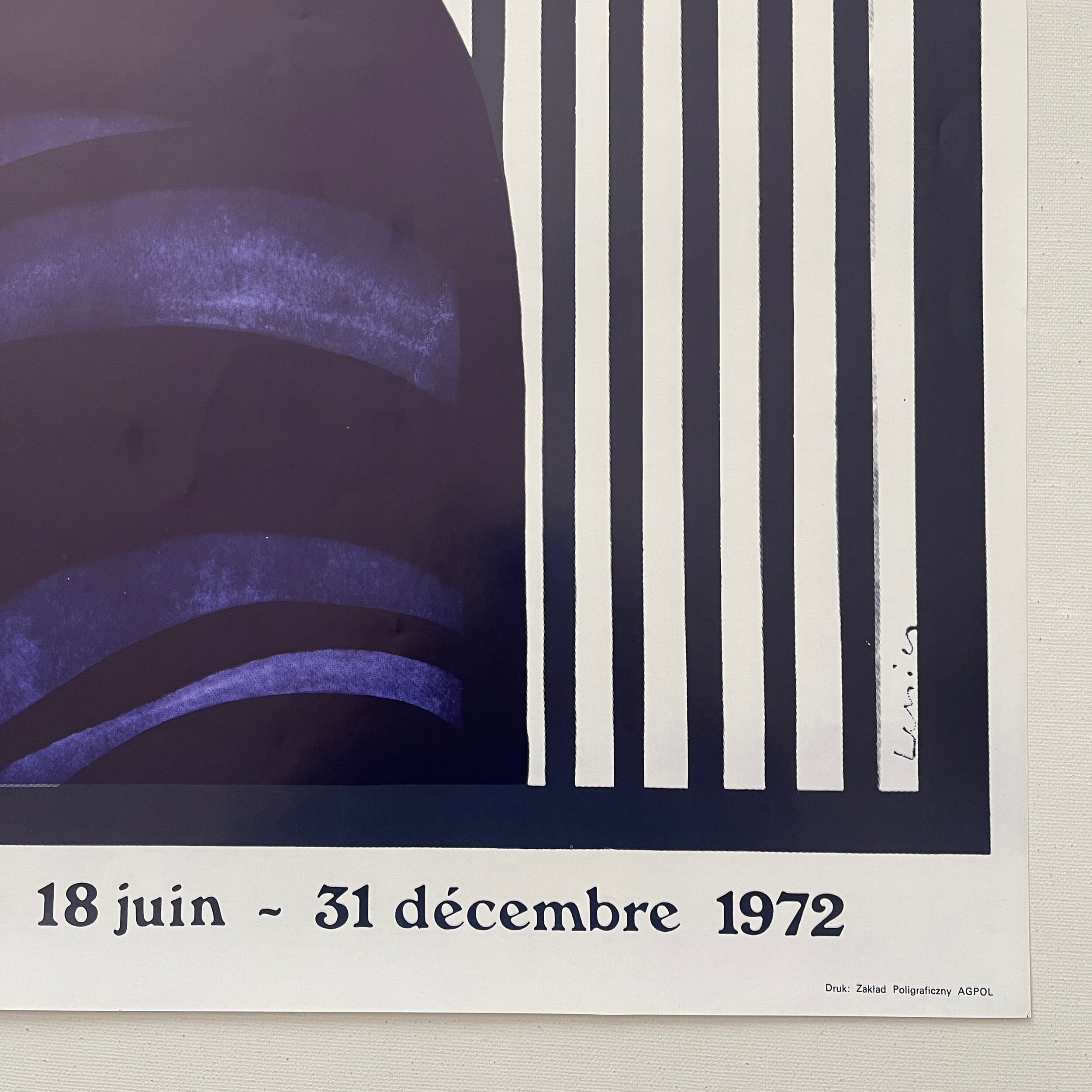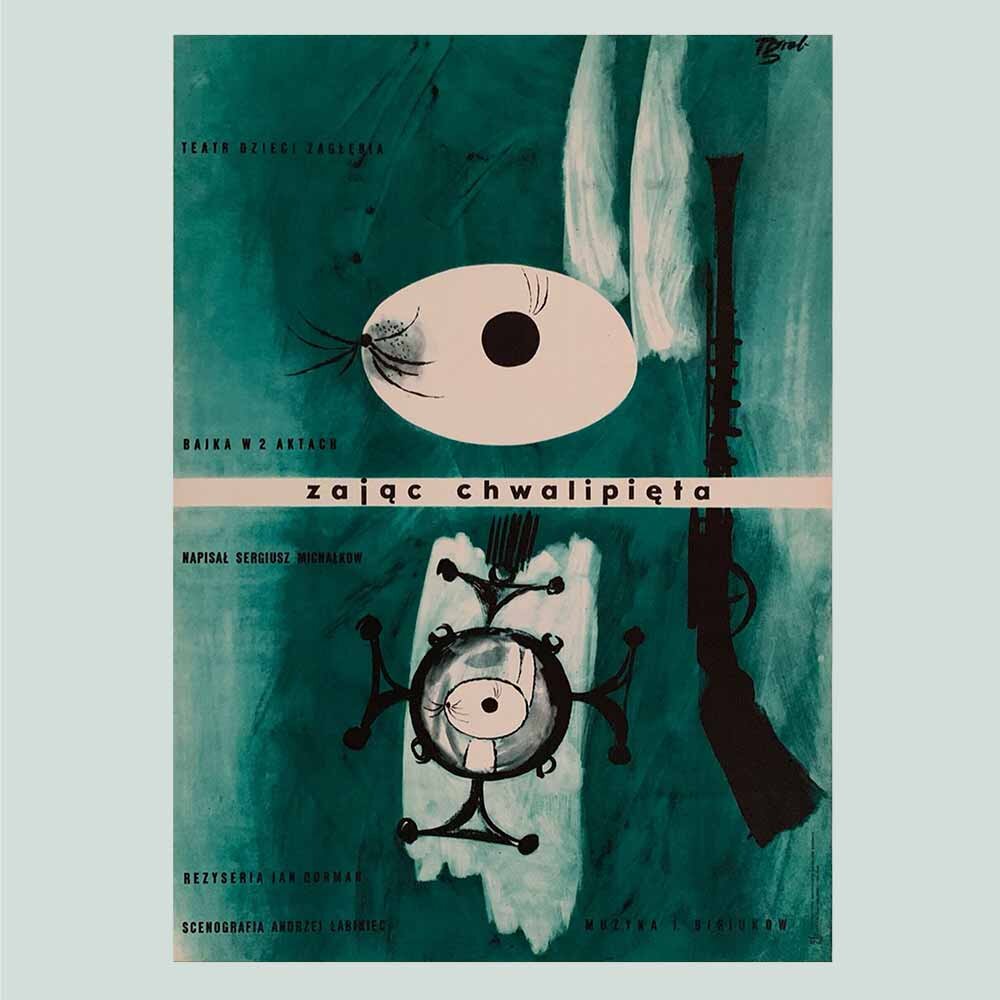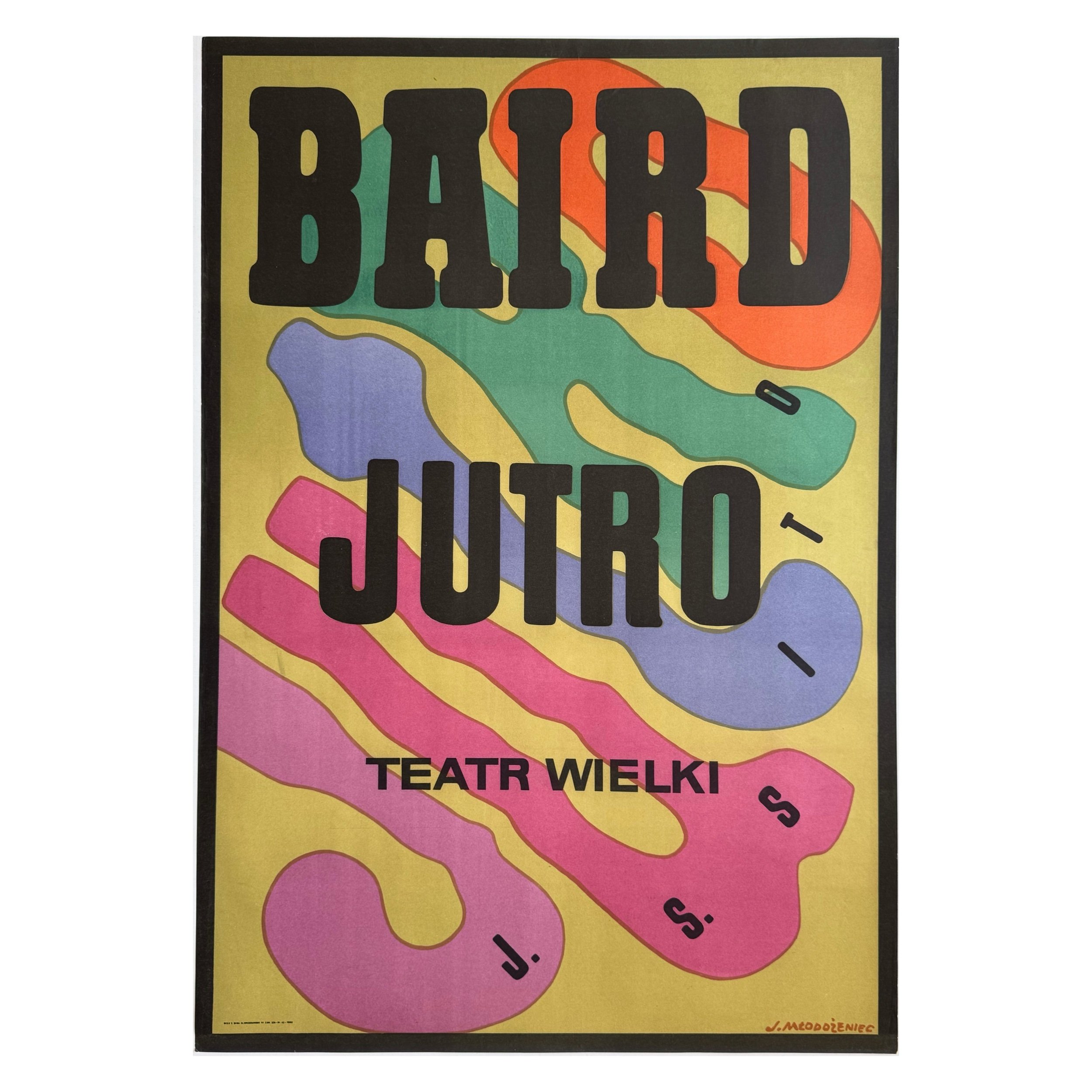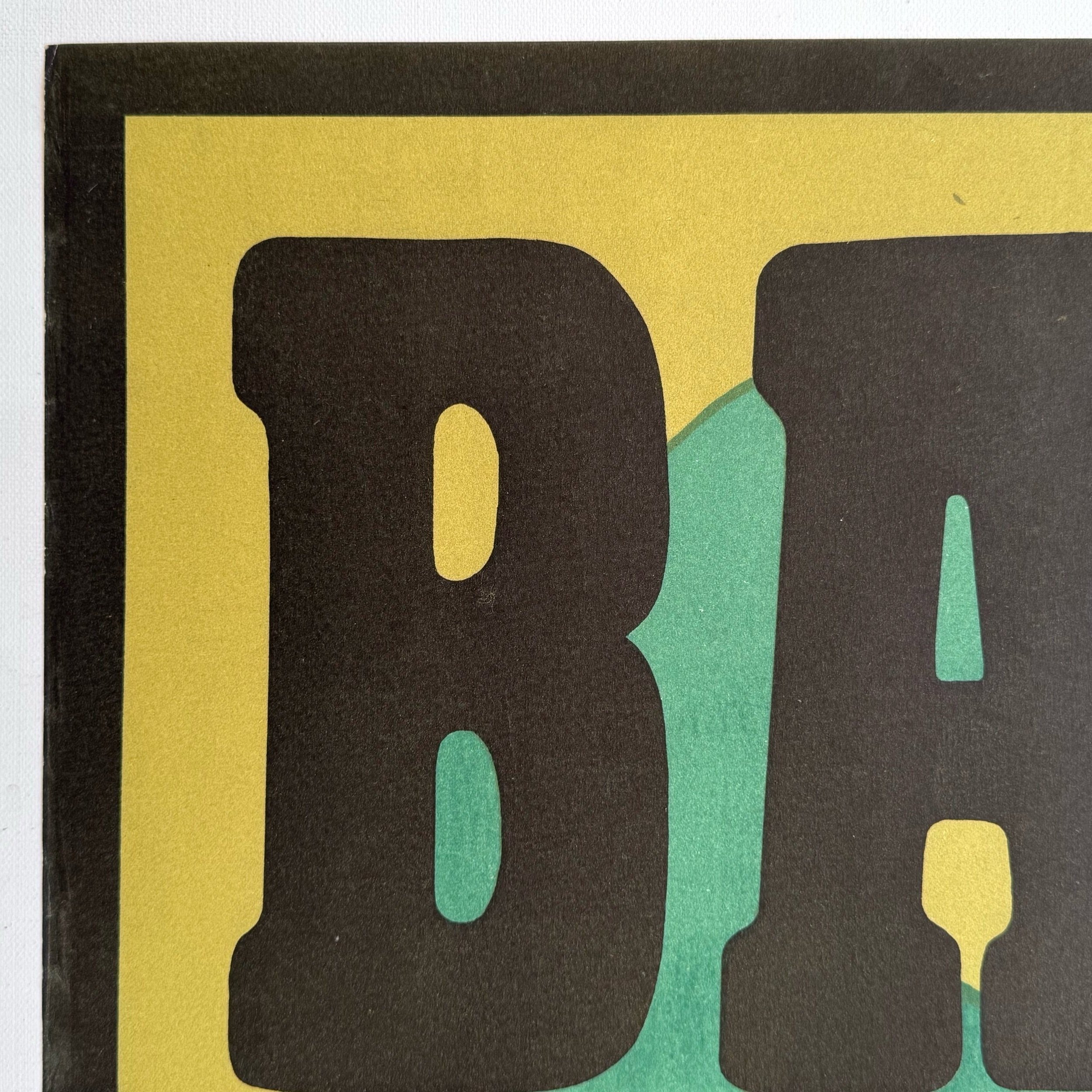SOLD | Join Waitlist | Mlodozeniec, Jan | 1974 | The Mannequin's Ball
Please note: price of future copies may vary depending on condition and availability
It’s hard to explain how unbelievably beautiful this rare and original vintage Polish poster by Jan Mlodozeniec is until you see it in the flesh. He designed it in 1974 for the theatre production of ‘Bal Manekinow’ (The Mannequin’s Ball) at the Teatr Ateneum in Warsaw. The offset printing and the colours are something else. It’ll be one we regret parting with for sure, but also it deserves to be hung on display and seen and we’ve both run out of wall space :)
Polish A1 size: 58 x 82 cm
Jan Mlodozeniec
Jan Młodożeniec was one of the most outstanding artists from 20th century Poland. He was born in Warsaw on November 8th 1929 to a well-to-do peasant family. They were all creative; his dad Stanislaw was a poet and founder of Polish futurism, his mum Wanda was an artist and his own son Piotr is now an accomplished graphic artist.
Jan Mlodozeniec decided to apply to art school on a bit of a whim after serving in the army during the war. He studied under the great master Prof. Henryk Tomaszewski and became one of the most prominent members of the Polish School of Posters.
Mlodozeniec’s painterly style is very distinct; characterised by naive childlike forms, bold lines, strong colour and a sense of humour. He said “I like colour in itself. I see its meaning in the colourful existence against the backdrop of a grey street. I never think twice about using six colours, something that from the point of view of poster canons (sparing means of expression) lowers its value in the eyes of experts”.
All of Mlodozeniec’s letters are painted by hand. He masterfully integrates the typography with the illustrative elements so that they intertwine with each other and work together as one.
Jan Mlodozeneic was very meticulous when designing his posters. He would often create hundreds of iterations for one piece - all in real scale on cardboard (until that became too expensive), and with just tiny changes in each version.
Jan Mlodozeniec was warm, joyful and generous. These qualities shine through in his work and it’s one of the reasons we love him so much.
Over his lifetime he created more than 400 Polish posters; including a wonderful selection of opera posters, theatre posters, film posters, a series of posters for folk shop Cepelia and Polish tourist poster. Alongside this work, he produced numerous book covers, illustrations, and drawings.
Mlodozeniec won many awards for his posters which were exhibited in over 40 solo shows around the world. Jan Mlodozeniec posters are now held in private collections and iconic museums including The Stedeliijk in Amsterdam, Kunstblibliothek in Berlin and the Museum of Modern Art in Toyama.
Please note: price of future copies may vary depending on condition and availability
It’s hard to explain how unbelievably beautiful this rare and original vintage Polish poster by Jan Mlodozeniec is until you see it in the flesh. He designed it in 1974 for the theatre production of ‘Bal Manekinow’ (The Mannequin’s Ball) at the Teatr Ateneum in Warsaw. The offset printing and the colours are something else. It’ll be one we regret parting with for sure, but also it deserves to be hung on display and seen and we’ve both run out of wall space :)
Polish A1 size: 58 x 82 cm
Jan Mlodozeniec
Jan Młodożeniec was one of the most outstanding artists from 20th century Poland. He was born in Warsaw on November 8th 1929 to a well-to-do peasant family. They were all creative; his dad Stanislaw was a poet and founder of Polish futurism, his mum Wanda was an artist and his own son Piotr is now an accomplished graphic artist.
Jan Mlodozeniec decided to apply to art school on a bit of a whim after serving in the army during the war. He studied under the great master Prof. Henryk Tomaszewski and became one of the most prominent members of the Polish School of Posters.
Mlodozeniec’s painterly style is very distinct; characterised by naive childlike forms, bold lines, strong colour and a sense of humour. He said “I like colour in itself. I see its meaning in the colourful existence against the backdrop of a grey street. I never think twice about using six colours, something that from the point of view of poster canons (sparing means of expression) lowers its value in the eyes of experts”.
All of Mlodozeniec’s letters are painted by hand. He masterfully integrates the typography with the illustrative elements so that they intertwine with each other and work together as one.
Jan Mlodozeneic was very meticulous when designing his posters. He would often create hundreds of iterations for one piece - all in real scale on cardboard (until that became too expensive), and with just tiny changes in each version.
Jan Mlodozeniec was warm, joyful and generous. These qualities shine through in his work and it’s one of the reasons we love him so much.
Over his lifetime he created more than 400 Polish posters; including a wonderful selection of opera posters, theatre posters, film posters, a series of posters for folk shop Cepelia and Polish tourist poster. Alongside this work, he produced numerous book covers, illustrations, and drawings.
Mlodozeniec won many awards for his posters which were exhibited in over 40 solo shows around the world. Jan Mlodozeniec posters are now held in private collections and iconic museums including The Stedeliijk in Amsterdam, Kunstblibliothek in Berlin and the Museum of Modern Art in Toyama.
Please note: price of future copies may vary depending on condition and availability
It’s hard to explain how unbelievably beautiful this rare and original vintage Polish poster by Jan Mlodozeniec is until you see it in the flesh. He designed it in 1974 for the theatre production of ‘Bal Manekinow’ (The Mannequin’s Ball) at the Teatr Ateneum in Warsaw. The offset printing and the colours are something else. It’ll be one we regret parting with for sure, but also it deserves to be hung on display and seen and we’ve both run out of wall space :)
Polish A1 size: 58 x 82 cm
Jan Mlodozeniec
Jan Młodożeniec was one of the most outstanding artists from 20th century Poland. He was born in Warsaw on November 8th 1929 to a well-to-do peasant family. They were all creative; his dad Stanislaw was a poet and founder of Polish futurism, his mum Wanda was an artist and his own son Piotr is now an accomplished graphic artist.
Jan Mlodozeniec decided to apply to art school on a bit of a whim after serving in the army during the war. He studied under the great master Prof. Henryk Tomaszewski and became one of the most prominent members of the Polish School of Posters.
Mlodozeniec’s painterly style is very distinct; characterised by naive childlike forms, bold lines, strong colour and a sense of humour. He said “I like colour in itself. I see its meaning in the colourful existence against the backdrop of a grey street. I never think twice about using six colours, something that from the point of view of poster canons (sparing means of expression) lowers its value in the eyes of experts”.
All of Mlodozeniec’s letters are painted by hand. He masterfully integrates the typography with the illustrative elements so that they intertwine with each other and work together as one.
Jan Mlodozeneic was very meticulous when designing his posters. He would often create hundreds of iterations for one piece - all in real scale on cardboard (until that became too expensive), and with just tiny changes in each version.
Jan Mlodozeniec was warm, joyful and generous. These qualities shine through in his work and it’s one of the reasons we love him so much.
Over his lifetime he created more than 400 Polish posters; including a wonderful selection of opera posters, theatre posters, film posters, a series of posters for folk shop Cepelia and Polish tourist poster. Alongside this work, he produced numerous book covers, illustrations, and drawings.
Mlodozeniec won many awards for his posters which were exhibited in over 40 solo shows around the world. Jan Mlodozeniec posters are now held in private collections and iconic museums including The Stedeliijk in Amsterdam, Kunstblibliothek in Berlin and the Museum of Modern Art in Toyama.























